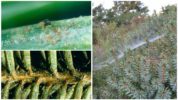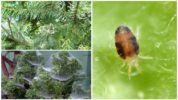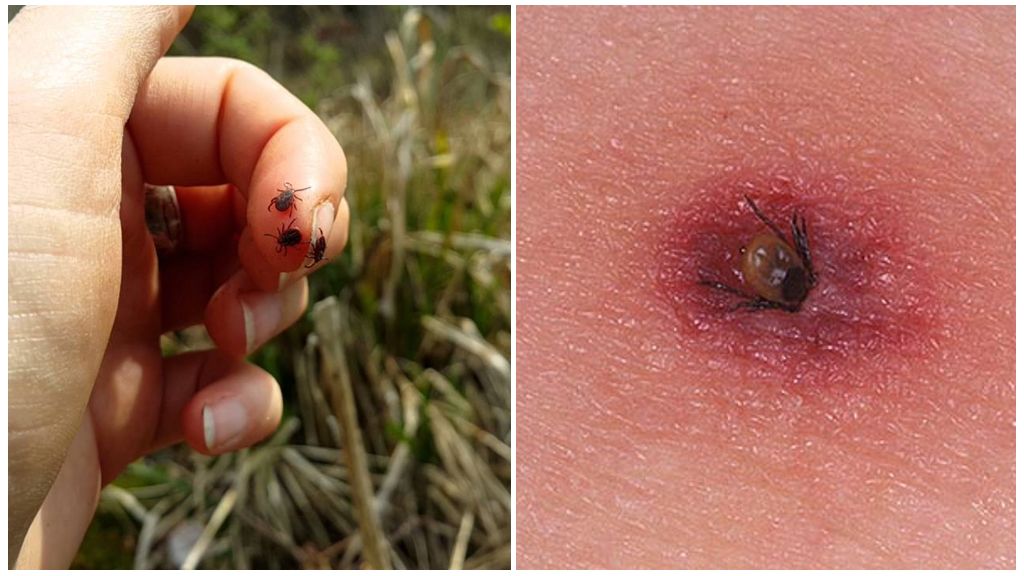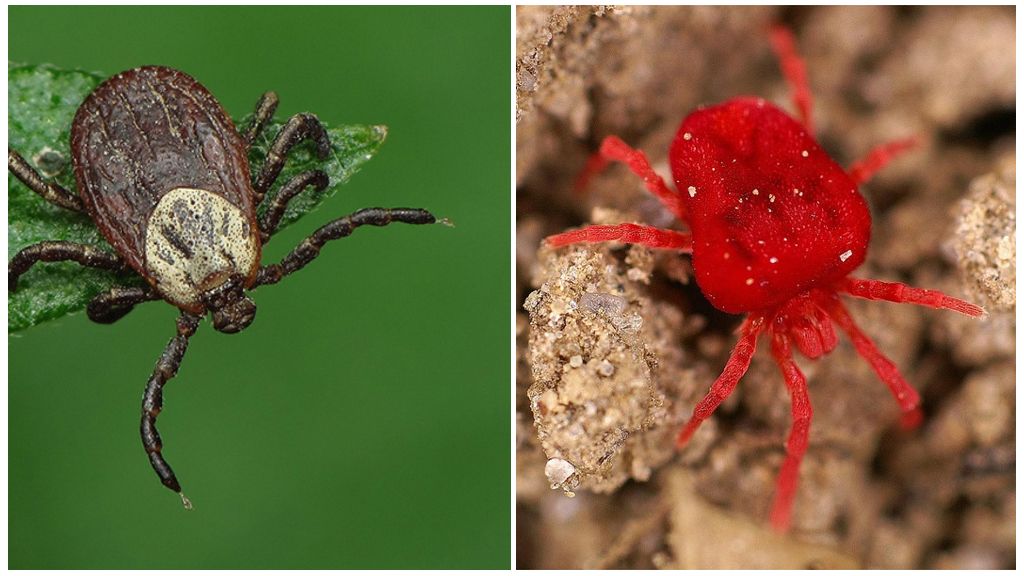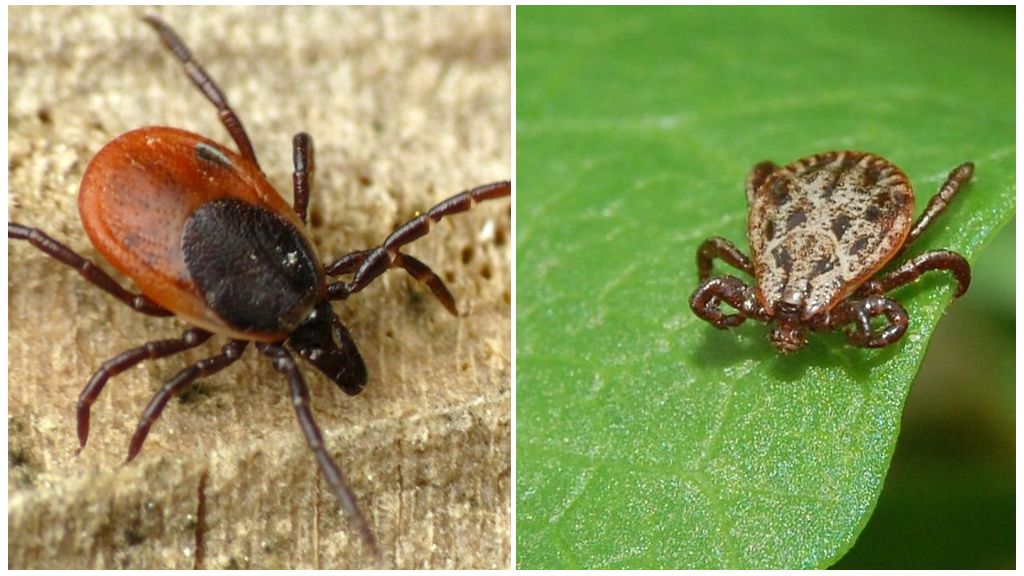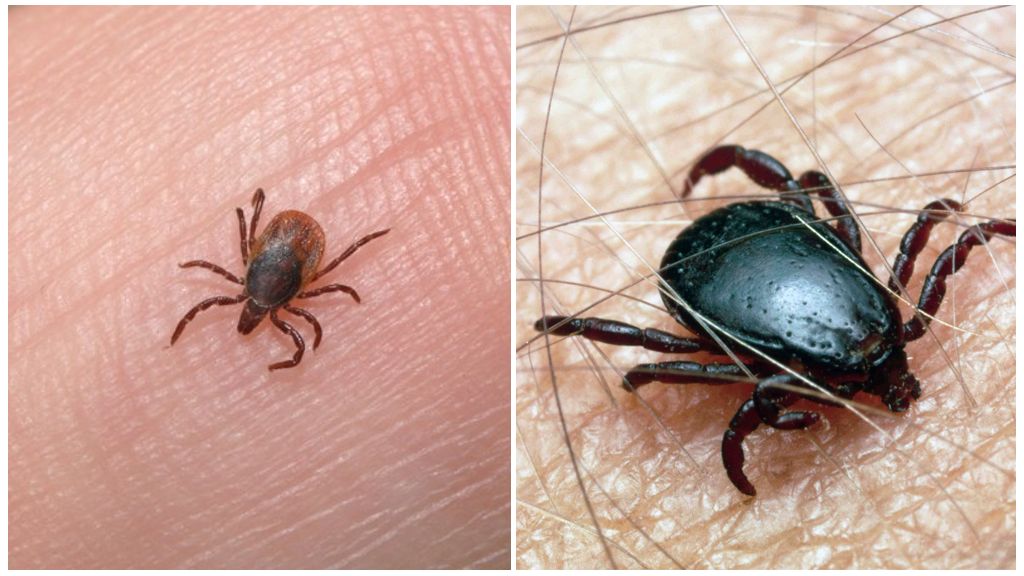- Spruce Spider Mites
- Spruce Spider Mites
Many people do not know if there are ticks in the pine forest, because they are used to hearing that they inhabit on birches or in dense tall grass. Walking through the coniferous forest, you can see a strange white web on pines and firs. If you come closer, then among this web you will see small spiders. These are spruce representatives spider mites.
Pests in the coniferous forest
Familiar to all ixodic parasites live in dense grass or on the lower branches of deciduous trees, where you can easily find your victim, clinging to it with his tenacious limbs. But a spruce or pine tick does not feed on blood, but on plant sap. In pine forest during dry and hot summer ticks can be in large numbers. This is due to optimal weather conditions for their reproduction.
Important!
Ixodid ticks also exist in the pine forest. They live in clearings and clearings, where there are thickets of grass.
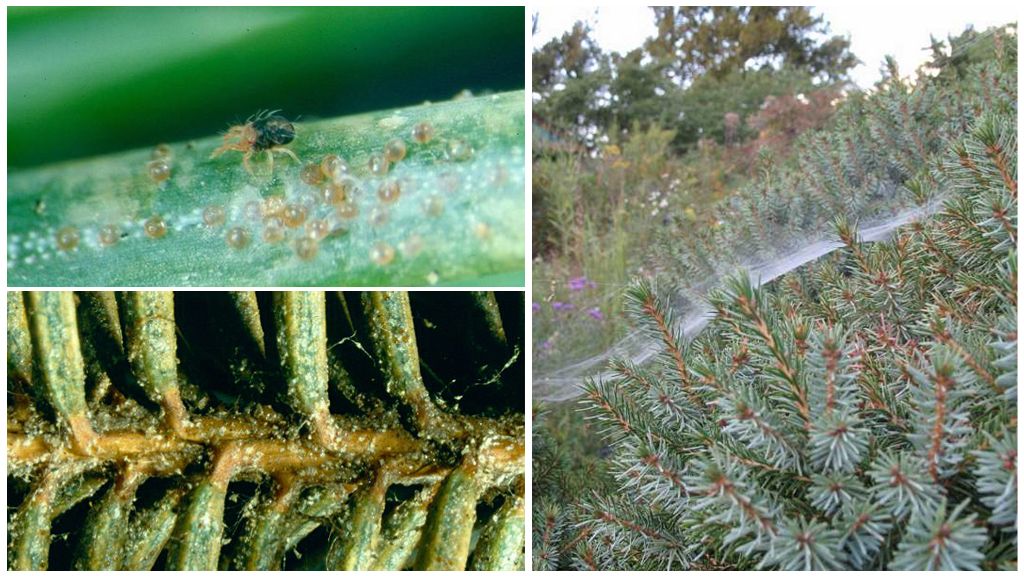
Spider mites on pines and firs suck the juice from the needles. Damaging one branch, they crawl in whole colonies to the next. Heavy rains and humidity can reduce their amount and save the pine forest. During the dry summer, ticks in the coniferous forest can multiply in such numbers that numerous trees will be adversely affected. After their invasion, the needles dry out and turn brown. The nutritional processes are also disrupted, and the plant may die.
Description of the spider mite
Pine parasite has a microscopic body size - not more than 0.6 mm in females and 0.45 mm in males. Adults are small spiders of gray-green color. They quickly crawl along the leaf and web in a chaotic manner. Their larvae look like underdeveloped translucent adults. The pest's appetite at all stages is excellent.
Females, producing offspring all summer, can hide in the autumn for winter in the bark of pine trees. If the winter was mild, then they safely live to spring and continue their activities. Parasites have no natural enemies. Such small inhabitants of a pine forest are not interested in birds. In addition, to reach them through the prickly needles is not so easy.
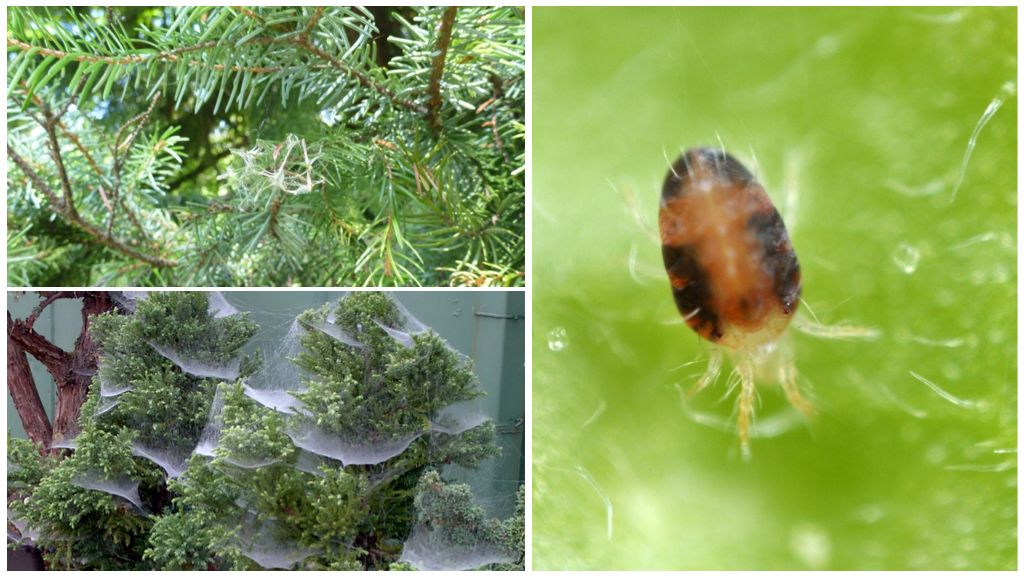
Control methods and preventive measures
Ticks live in a pine forest until they begin to fight them. Using special acaricides spraying is performed. As a preventive measure, the long lower branches of the affected pine or spruce are cut, so as not to infect neighboring ones. You can deal with the pest by spraying the crown of trees from a hose. This method is available only for saving piece specimens in the park or in the local area, but not the entire nursery.
On a note!
In neglected cases of spruce spider mite infection, whole forest lands may die if no one monitors and controls their condition.
On the scale of coniferous forests, trees can be protected from pests only at an early stage. If the infection has spread to several dozen trees, you can only wait for torrential rains and frosty winters, when most wintering parasites die. In one season, the invasion of pine and spruce are able to fully recover. But with many years of activity of pests in the coniferous forest, many trees can die.
